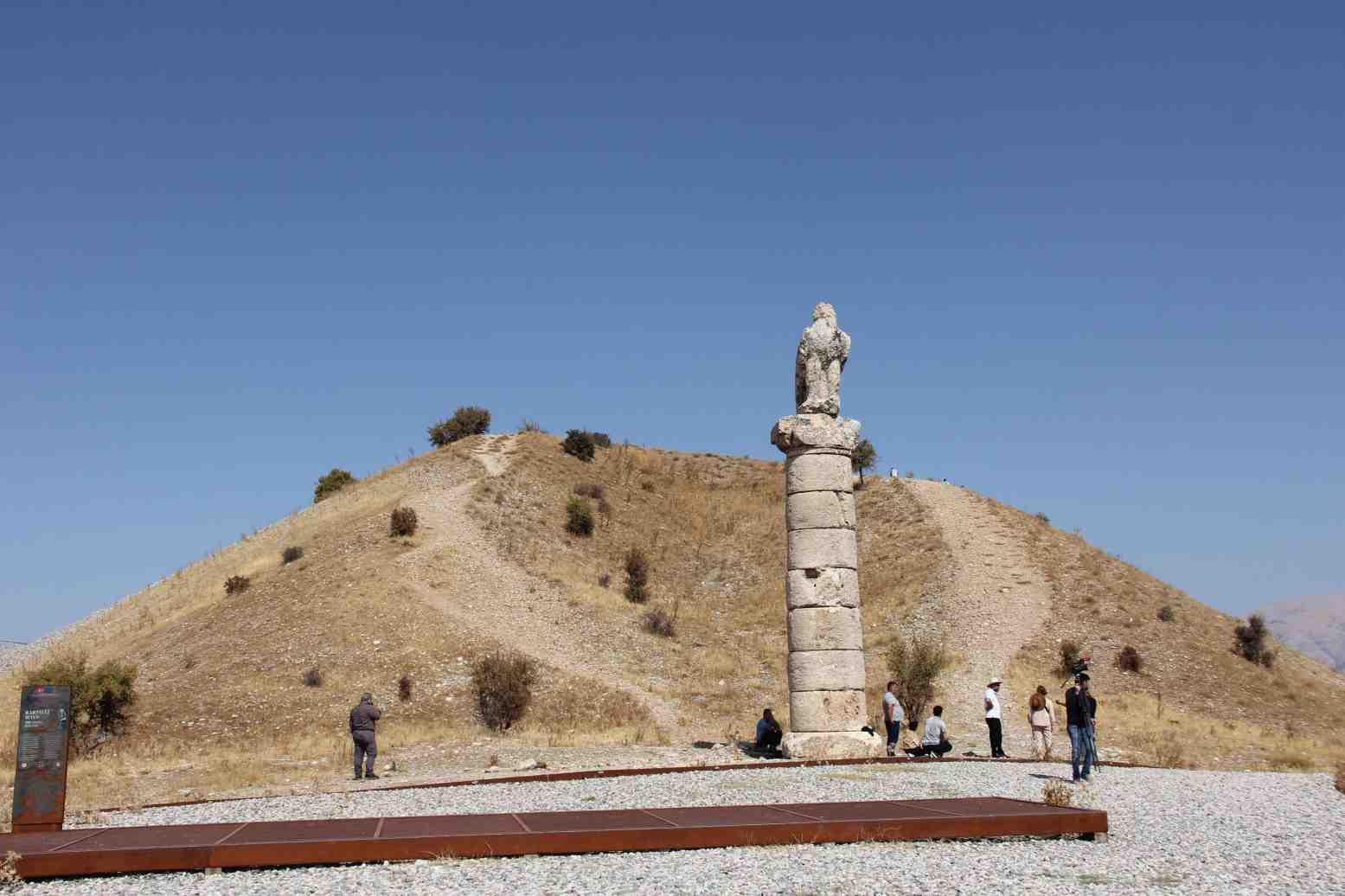
Ankara University and the Adıyaman Municipality have initiated a joint georadar project aimed at the visualization and unraveling of the mysteries of the 2,000-year-old Karakuş Tumulus situated in the southern province.
"Our objective with this endeavor is to gather data through georadar imaging in the region where the tumulus is located, then reveal the locations and depths of possible burial sites with two- and three-dimensional imagining," stated Selma Kadıoğlu, the head of the study team.
Pointing out that the georadar study will provide significant contributions in identifying priority areas before archaeologists commence their excavation works, Kadıoğlu also noted through imaging at depths ranging from 35 to 45 meters, the team can ascertain the presence of any structural problems or fractures within the site.
Yusuf Kaan Kadıoğlu, the dean of Ankara University’s Engineering Faculty, similarly asserted that that they will be able to carry out ground structure detection using area imaging without the need for excavation.
"Previously, some excavation works were partially conducted in this area, but subsurface imaging has not been comprehensively undertaken. Through this study, we will determine what lies beneath the surface without the need for digging," he noted.
"The story of the Karakuş Tumulus is indeed ancient and holds significant historical and cultural value. With our efforts, we aim to shed clearer light on this value," Kadıoğlu said.
Abuzer Gelse, the head of Adıyaman Provincial Culture and Tourism Directorate, underlined the goal of enhancing research related to the Commagene Kingdom through the joint activities at the tumulus.
Despite the knowledge that Karakuş Tumulus was a sacred site built 2,000 years ago, data about the region is quite limited, Gelse noted.
"Through the data obtained from subsurface imaging in this study, we aim to uncover the enigma of the Karakuş Tumulus,” he said.
Karakuş means black bird in Turkish, and the monument received this name as there is a column topped by an eagle. The tumulus is surrounded by groups of three Doric columns, each about nine meters high. The columns are topped with steles reliefs and statues of a bull, lion and eagle. An inscription indicates the presence of a royal tomb that housed three women.
The monument has Greek honorific inscriptions on the external faces of the two drums of the central column of the northeast.